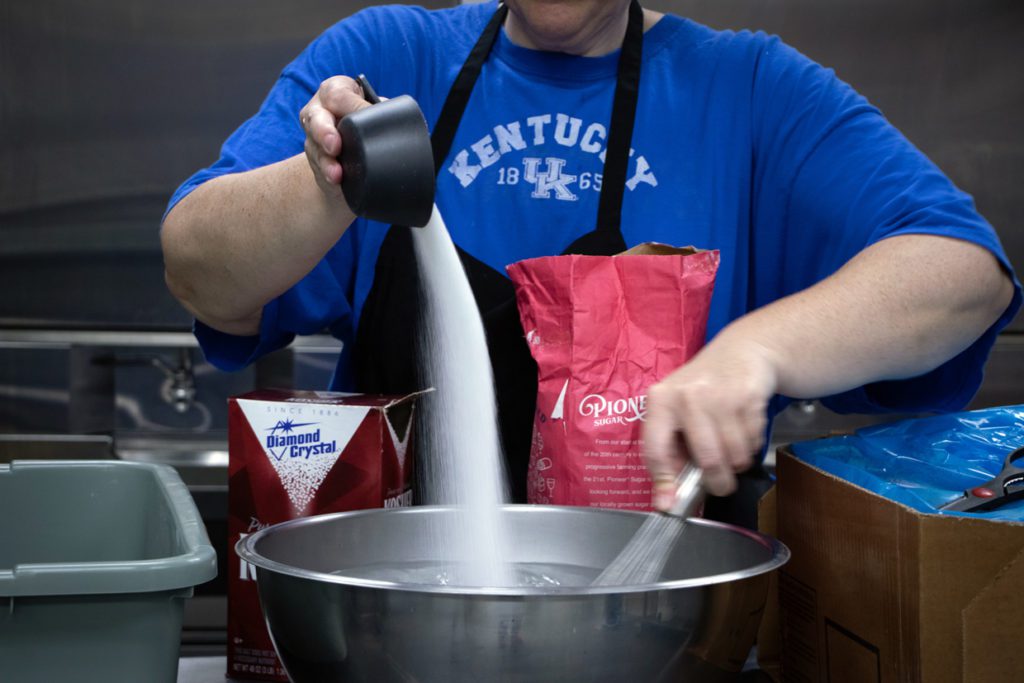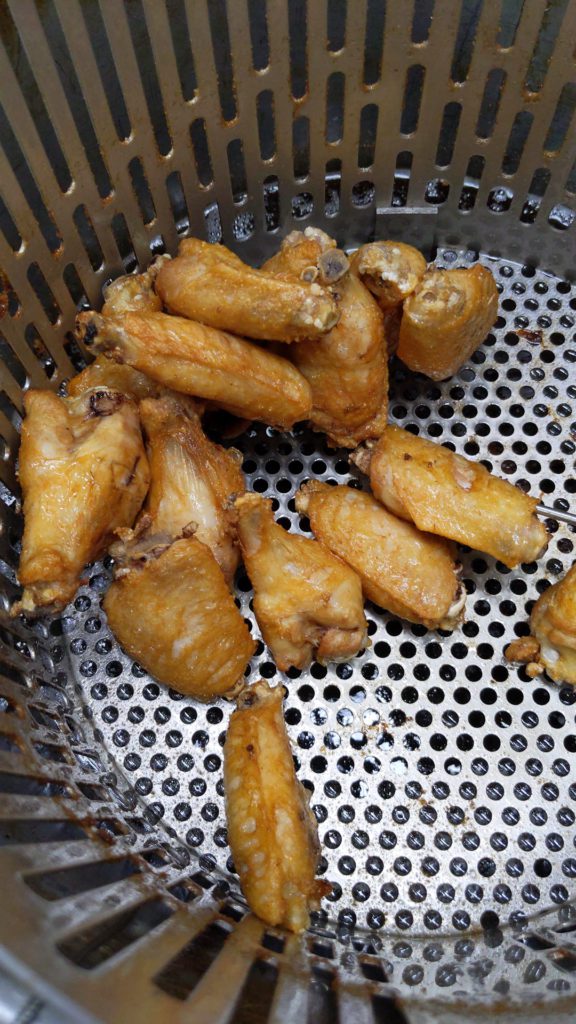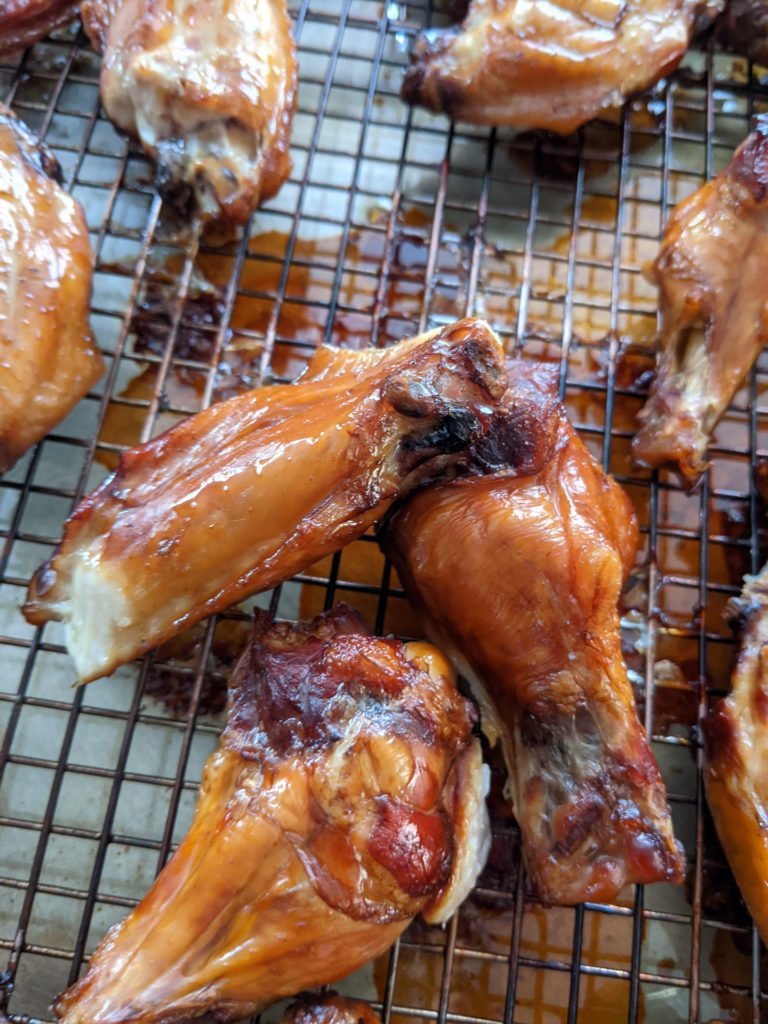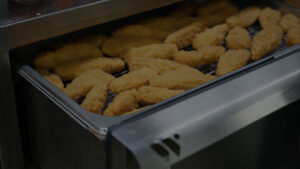Brining is an age-old method of enhancing the flavor and quality of proteins. Traditionally, it’s a salt and water mixture, but other spices or flavorings can be added.
Why brine? It has a lot of advantages – key among them is adding flavor. Let’s face it, some proteins, like chicken, just don’t have that much favor be themselves. Brining adds a savory kick to the food, enhancing the flavor.
Besides adding flavor, brining also increase liquid absorption by the food, making for a juicier end product. It can also help dissolve some muscle fiber, resulting in a more tender final dish. Kitchn.com has a fascinating article on the science behind brining. It’s worth a read.
We took on chicken wings for our brining day.

The Brine Recipe
- 1 Gallon Water
- ¾ Cup Salt
- 2/3 Cup Sugar
- Chicken Wings – separated Jumbo size Party Wing (Restaurant Depot)
The Brining Process
- Combine ingredients and stir until all grains are dissolved. (*Note – if using warm/hot water, please be sure to allow mix to completely cool before adding to chicken wings. Lukewarm water and raw poultry are a MAJOR foodborne illness risk). This is enough brine for approximately 20 lbs of wings.
- Add wings to a large container. Pour brine, making sure all wings are submerged.
- Store brined wings in the refrigerator for at least a couple of hours. Wings can be brined overnight.
Once brined, the wings are ready for the desired cooking process. Here are a couple we really liked!




Staged, then Fried
Our equipment for this portions was a CVap® Cook and Hold Oven and a Collectramatic® Fryer. Both are built by Winston Foodservice.
The Staging Settings
- Cook Time: 1 hour
- Vapor Temp Range: 190-200°F
- Air Temp Range: 200-220°F
The Process
- Place wings on a rack lined full sheet pan, single layer and spaced. The rack elevates the wings off the pan. This elevation, combined with good spacing, allows the wings to cook more evenly.
- Check product temperature as it approaches one hour mark. Full staged wings should have an internal temperature between 165-175°F.
- Deep fry at 350°F for approximately two minutes. We were targeting a 200F endpoint temperature.
The staged/fried wings had a crispy skin texture and a tender, juicy bite. The brine gave them a nice seasoned and savory flavor.


Smoked Wings
We smoked the wings in a CVap Cook and Hold Oven, using Winston’s Smoker Box and mixed wood pellets.
Smoker Program
- Cook Time: 60-90 minutes
- Vapor Temp Range: 170-180°F
- Air Temp Range: 320-330°F
- Smoker Box Timer: 60-90 minutes (reflect the cook cycle)
Place wings on a rack lined full sheet pan, single layer and spaced. The rack elevates the wings off the pan. Combined with good spacing, it allows the wings to smoke more evenly. Endpoint temperature of the wings should be between 180-190F.
The finished smoked wings had a firm skin texture. The bite was smokey, juicy, and perfectly seasoned.





